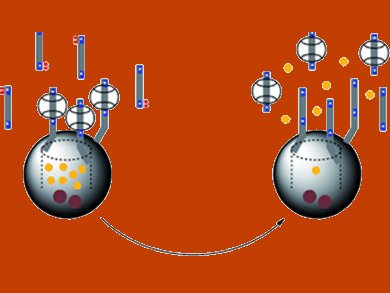The controlled release of guest molecules from magnetic mesoporous silica nanoparticles (MSNs) has been achieved by Xuezhong Du and co-workers, Nanjing University, China. The team tethered 1,4-butanediamine stalks to the external surfaces of MSNs with embedded Fe3O4 nanoparticles. In neutral aqueous environments, cucurbit[7]uril encircled the protonated stalks and blocked the guest molecules, calcein, within the nanopores.
The release of calcein could be activated by the enzymatic decarboxylation product of lysine, cadaverine, which has a high affinity for cucurbit[7]uril. The release of small portions of calcein could be controlled by alternating changes in enzymatic decarboxylation products and cucurbit[7]uril.
The magnetic delivery system has promising applications for biosensors and in vivo site-specific drug release.
- Enzyme-Inspired Controlled Release of Cucurbit[7]uril Nanovalves by Using Magnetic Mesoporous Silica
J. Liu, X. Du, X. Zhang,
Chem. Eur. J. 2011.
DOI: 10.1002/chem.201002899




